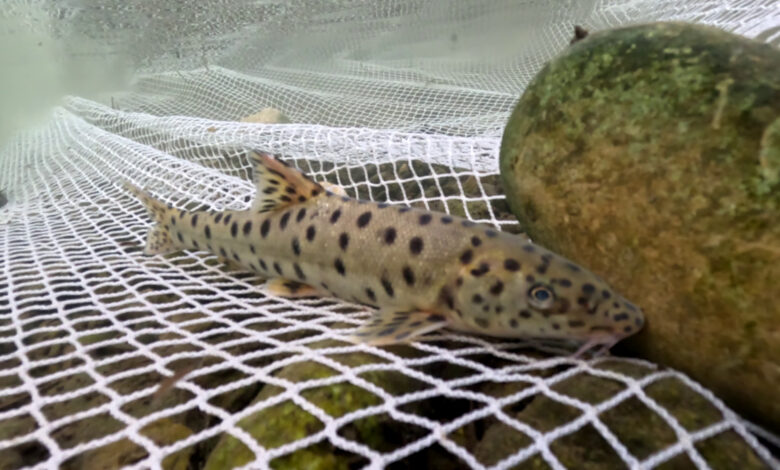
In the Turkish portion of the Tigris River, a team of ichthyologists has rediscovered the leopard barbel, which was last scientifically documented more than a decade ago, instilling hope that other species might have survived destructive human activity.
“There is nothing quite like the feeling of finding that a species that has been pushed to the brink of extinction is still hanging on, despite the odds,” says Cüneyt Kaya, associate professor at Recep Tayyip Erdogan University and member of the expedition team. “With both the Batman River loach and now the leopard barbel, we have an obligation to mobilize conservation efforts to ensure neither becomes lost again.”
Not scientifically documented since 2011, the leopard barbel – or Luciobarbus subquincunciatus – was the second species to be rediscovered on SHOAL and Re:wild’s Most Wanted Lost Fishes list, the first being the Batman River loach rediscovered in Southern Turkey in late 2021. The carp-like, spotted fish was caught by a local fisherman just days after the second of two expeditions. The team confirmed the identity of the freshwater fish, which has conspicuous black spots and the telltale fleshy filament dangling from its mouth. Now, the ichthyologists want to conduct a series of seminars destined for fishers and teachers to build pride in the country’s riverways and wildlife. The success story of those two rediscoveries could contribute to protecting the Tigris River and its rich biodiversity and a better understanding of where the remaining number of leopard barbel can be found. The International Union for Conservation of Nature updated its assessment of freshwater fish, stating that dams and water extraction put 45% of all threatened freshwater fish at risk of extinction, proof that sustained conservation efforts are required to protect the endangered species.



